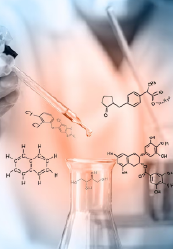Increasing Demand in Wastewater Treatment to Drive Growth
Glycerol, also known as glycerin, is one of the major byproducts of biodiesel production. During the processing of biodiesel, approximately 10 pounds of crude glycerin gets extracted from every 100 pounds of biodiesel produced. The biodiesel industry is growing at a rapid pace, resulting in a surplus of crude glycerin.
Since the purification of this glycerol for use in the cosmetics, food, and pharmaceutical industries is costly, biodiesel producers finding ways for alternate options. Anaerobic digestion, composting, combustion, animal feeds, and biological transformations to value-added goods have all been used as disposal and utilization methods for this crude glycerin.
Impurities are extracted from the crude form of the product produced during biodiesel processing using a range of purification techniques such as adsorption, distillation, filtration chemical treatment, and extraction, among others. To obtain high purity goods, the above-mentioned techniques can be used in combination.
Glycerin is used in a variety of industries, including agriculture, cosmetics, pharmaceutical excipients, food, lubricants, oil and gas, personal care, and others. It is most commonly used as an emulsifier, anti-freeze, solvent, and humectant.
Key Dynamics of Crude Glycerin Market
The growing demand for crude glycerin in the food, pharmaceutical, and nutraceutical industries is expected to drive market growth. The ingredient can be used in several foods, including processed meat, condensed milk, and bakery goods. It is obtained commercially as a byproduct of the biodiesel manufacturing process.
Several nations, including South Korea, the United States, Germany, and Indonesia, have implemented biodiesel mandates, requiring that a certain proportion of conventional fuel be substituted with biodiesel. Rising biodiesel demand around the world is expected to drive production, resulting in a steady supply of raw materials.
The growing pharmaceutical industry around the world, as well as the numerous applications of refined glycerin in pharmaceutical preparation, cosmetics, and oral formulation, are propelling the growth of the crude glycerin market. Also, the increasing use of glycerin in the food industry is expected to fuel glycerin demand in the market.
Glycerin is a by-product of biodiesel processing, and the use of biodiesel is growing in response to environmental concerns. As a result, glycerin demand has increased dramatically, and strict regulations to ensure product consistency have made it mandatory to use refined glycerin in pharmaceutical and food products. Furthermore, people's spending on healthcare is increasingly changing, and people are becoming more health-conscious, which is pushing up demand for pharmaceutical products and raw materials.
Key Market Participants and Major Developments in Crude Glycerin Market
Market participants started witnessing increasing competition in the market as several new companies entering the market. Owing to rapid technological advancements and the rise in consumer requirements, leading companies operating in the market are collaborating to expand their business and gain a competitive advantage.
The industry is also experiencing an increasing trend of strategic acquisitions, partnerships, and mergers among market players to increase the product portfolio. Some of the players who are holding a strong position in the market are Cremer Oleo GmbH & Co. KG, GF Energy, Renewable Energy Group, Inc., Oleon NV, Abengoa Bioenergia SA, Aemetis, Inc., Cargill, STOCKMEIER Chemie GmbH & Co. KG, and Peter Cremer.
Deep-dive Insights on Crude Glycerine Market by Polaris Market Research: https://www.polarismarketresearch.com/industry-analysis/crude-glycerine-market/request-for-sample


